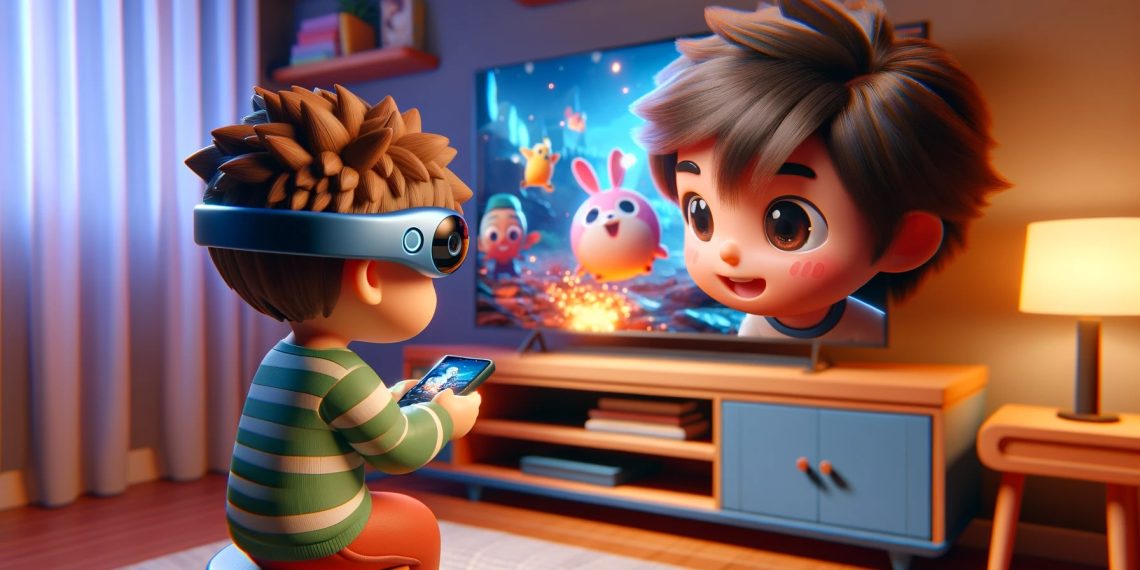Augmented reality combines computer-generated content with the real world, creating an interactive experience that can include visual, auditory, haptic, somatosensory, and olfactory sensations.
2D animations have transcended traditional mediums’ confines and leaped into the real world with the advent of AR. Imagine a scenario where you can bring your favorite animated characters to life, interacting with them as if they were standing right before you. This is now possible through the integration ofthese animations with AR.
Whether you’re a startup, a marketing agency, or an educational institution, partnering with a reputable 2D animation company or hiring talented animators directly can help you bring your ideas to life. This article will explore how 2D animation in AR pushes the boundaries of creativity and revolutionizes how we interact with digital content.
Table of Contents
The Role of Augmented Reality in 2D World
Augmented reality is a technology that superimposes digital content into the real world. This enhances our perception and interaction with our environment. AR has garnered significant attention across various industries, from gaming and entertainment to education and marketing.
The Future of 2D Animation
The future of 2D animation is auspicious as technology continues to advance. We can expect more advanced tools and techniques to enrich the creative process further. With the increasing availability of AR-enabled devices such as smartphones and smart glasses, the demand for these animations in augmented reality is expected to surge.
How Does Augmented Reality Impact the Field of 2D Animation?
The introduction of augmented reality (AR) has revolutionized the field of 2D animation services, offering new possibilities for creativity and user involvement. AR technology has enabled these animations to go beyond the constraints of conventional media and blend perfectly with the actual world.
1. Strengthen User Interaction
AR enables users to actively engage with animated characters and objects in their physical environment instead of passively watching animations on a screen. Users can touch, move, and manipulate 2D animations, creating an immersive and interactive experience.
2. Real-Time Integration
Users can view animations overlaid on their physical environment using a smartphone or AR-enabled device, seamlessly blending the virtual and real worlds.
3. Storytelling Possibilities
AR in animations can consolidate storytelling in new and exciting ways. Characters and objects can interact with the environment, adding depth and realism to the storytelling process.
4. Marketing and Advertising
AR technology can help brands to generate interactive and exceptional customer experiences. For instance, AR-powered applications can place animations on product packaging, offering supplementary information or entertainment value.
5. Educational Applications
Educational content can be brought to life, making it more engaging and memorable for students by combining these animations with AR.
6. Entertainment and Gaming
Combining AR with these animations allows developers to create immersive and interactive gaming experiences. Players can interact with animated characters and objects in the real world, blurring the lines between virtual and reality.
What Tools and Techniques Are Used to Create 2D Animations in Augmented Reality?
To achieve natural-looking 2D animations in augmented reality, a combination of tools and techniques is necessary to blend them with the natural world smoothly.
1. Animation Software: Tools such as Adobe Animate, Toon Boom Harmony, and Moho (formerly Anime Studio) provide various features and capabilities for creating high-quality animations. These software packages allow animators to create and manipulate characters, objects, and visual elements frame by frame.
2. Image Editing Software: Image editing software like Adobe Photoshop or GIMP is often used to create and edit the individual assets and elements that make up the animations.
3. Keyframe Animation: Animators define vital poses or frames at specific points in a sequence, and the software automatically generates the intermediate frames. This technique allows for smooth and fluid animation transitions.
4. Motion Tracking: Motion tracking is used to precisely track the movements of real-world objects or people and apply those movements to animated characters or elements in AR.
5. AR Development Engines and SDKs: To integrate 2D animations into augmented reality experiences, developers often utilize AR development engines and software development kits (SDKs). Popular AR development tools include Unity 3D with AR Foundation, Apple ARKit, and Google ARCore.
6. Marker-based and Markerless Tracking: Marker-based tracking involves placing physical or fiducial markers in the real world. The AR software uses these markers as reference points to anchor and track the animations. On the other hand, markerless tracking uses computer vision algorithms to track the environment based on visual features without needing physical markers.
7. Lighting and Shadow Effects: Animators use shading, gradients, and light mapping techniques to look after the animated elements blend orderly with real-world lighting conditions.
All in All
Integrating 2D animation with augmented reality opens creative expression and user engagement possibilities. You can hire a 2D animator or work with an experienced 2D animation agency to merge these two technologies to create immersive experiences that blur the line between the real and digital worlds. As the future unfolds, we expect 2D Animation services in AR to continue pushing the limits of creativity, fascinating audiences, and transforming how we interact with digital content.

